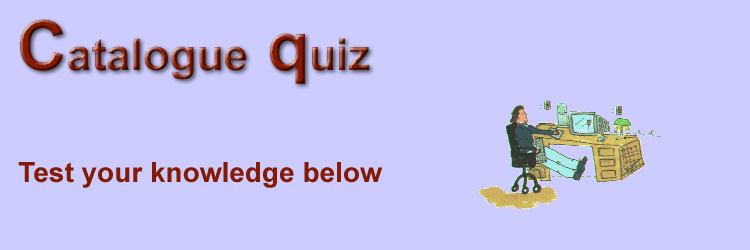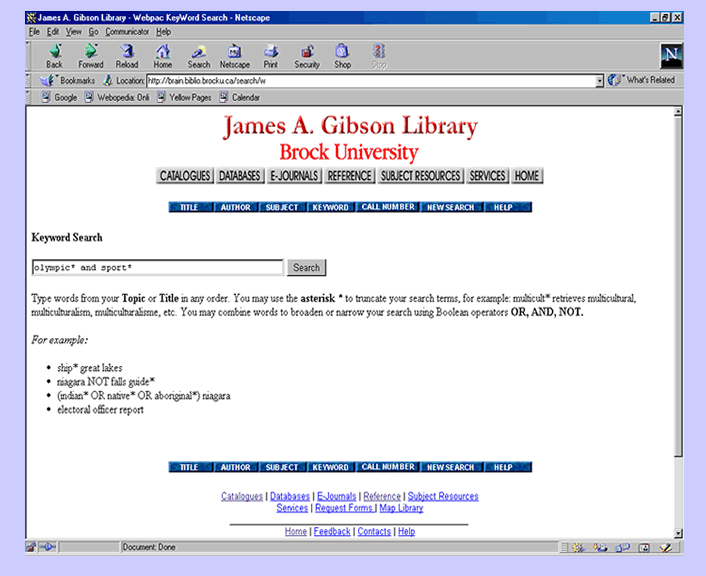
Look
at each example from the Brock Library Catalogue and answer the questions below:
This
is an example of a typical online catalogue screen search:

1.
By using the truncation symbol "*" in this search (e.g. olympic* and
sport*) we will probably be broadening our search.
2.
You choose the search button to execute your search.
3.
If the search results are not what you expected, you can safely assume that
there just are not many books on your topic in the library.
4.
Changing the search term from "sport*" to "game*" might
result in some good books on your topic.
5.
Changing the search term from "sport*" to a more specific sport like
"sprinting" might be a good strategy to narrow your search.
6.
If you want to do another keyword search, you simply click the subject search
key.
7.
When you want to do another keyword search, simply click the keyword button
from this screen.
8.
There are possibly 98 books on your topic in the library.
9.
There are only 12 books available in the library on your topic.
10.
If you wanted to see the full catalogue entry of any one of these selections,
you just click on one of them.
11.
If you want to narrow your search at this point you click the "another
search" button.
12.
By clicking on the "limit this search" button you can easily narrow
your search by choosing different limiters like "date of publication"
or "material type".
13.
There are 38 possible books on your topic published after 1990.
14.
There is no way to narrow down this selection of 38 titles from this screen
except by looking at each entry and judging if it is of any use to you.
15.
You could always do another limit on this search to narrow down your topic by
simply backing up one screen and then modifying your original limit.
16.
The information given beside each book entry on the screen shows you where each
book is shelved and what floor it is on.
17.
This book was published in 1999.
18.
The headings highlighted in blue under the term "subject" are examples
of other book titles related to this book.
19.
The subject "winter olympic games (18th, 1998, Nagano, Japan) would be
a good place to click on to possibly find other book titles related to your
topic.
20,
The subject "sex discrimination in sports United States" listed on
this screen indicates that this book has been catalogued under this subject.
21.
A display of subject headings like this often indicates new possibilities for
your search topic since it shows similar subject headings that might be useful
for your topic.
22.
Looking at the number of hits under "entries" tells you how relevant
the subject is since the higher the number the more important the subject must
be.
23.
The only way to see if any of the entries under a subject heading given here
are going to be useful to you is for you to click on a subject heading and view
the displays.
24.
To view more headings in this alphabetized list of subject headings you can
either click on "previous page" to see prior headings in the aphabetical
list, or "next page" to see headings further along in the list.
25.
The quickest way to do another keyword search on your topic is to choose "another
search" from the choices provided.


